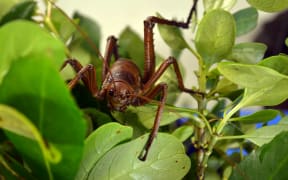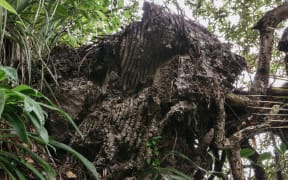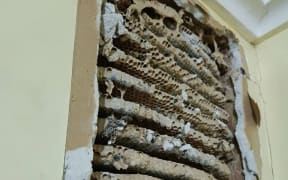- Video / Supplied / Phil Lester
Researchers have destroyed a "frighteningly large" wasp nest found in Martinborough, Wairarapa.
The 1.8 metre long, 1.3m wide and 96cm tall nest - about the size of a double bed - was built underneath a fallen pine tree, between farmland and a stream. It was found by students on a field trip.
Victoria University professor of biology Phil Lester said a normal nest was usually about the size of a basketball and holds 5000 to 10,000 worker wasps.
"This nest we would estimate to have at least 10 times that, so 100,000 to 200,000 workers who were all trying to kill us," the entomologist said.
"They were trying to sting us in a big way, when they can't sting they're trying to do things like spray venom," Lester said, describing the venom's pungent, "peppery" smell.
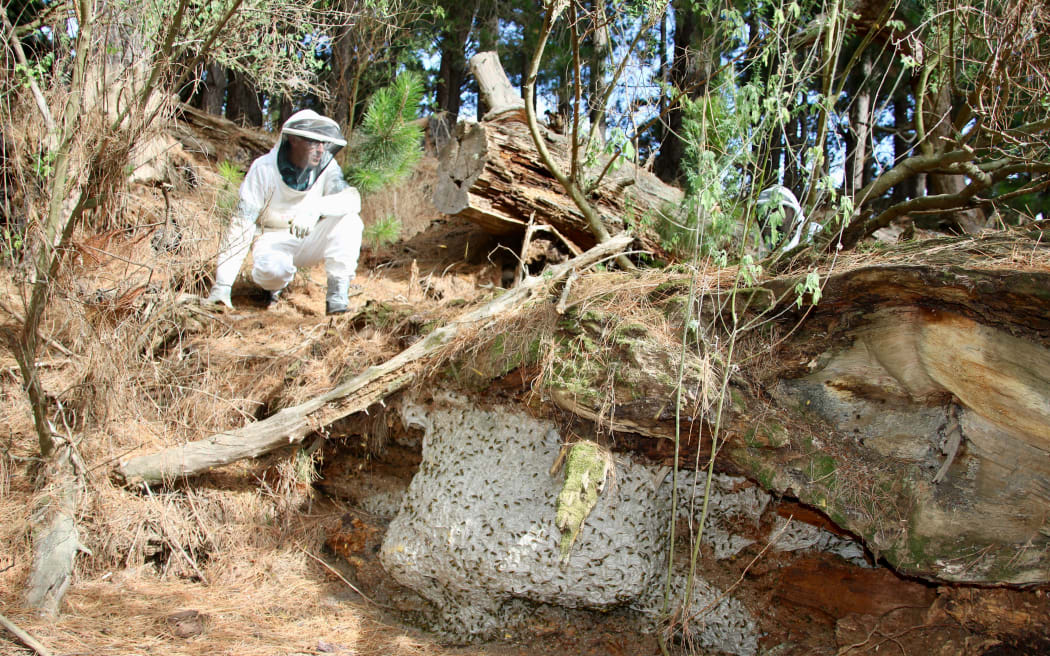
James Baty with the full nest before it was destroyed. Photo: Supplied
The hive - which was home to a swarm of German Wasps - was grey and covered in a papery substance. Inside were horizontal layers of comb, from which hung larvae.
The nest was "almost certainly perennial", Lester said, meaning it was started last year or the year before, and had managed to stay alive over winter. The researchers had effectively killed the wasps by taking the hive apart, but the samples would be studied.
"The hive is frightening and frighteningly large, but on the other hand it's pretty amazing," he said.
"People refer to these sort of nests as superorganisms where you've got a lot of sterile workers who are there primarily supporting the queen to raise new wasps for the following year.
"What we want to know really about these is how do they become so large, so successful? One of the ways that they may be doing this is having multiple queens that are contributing to the nest and the worker production."
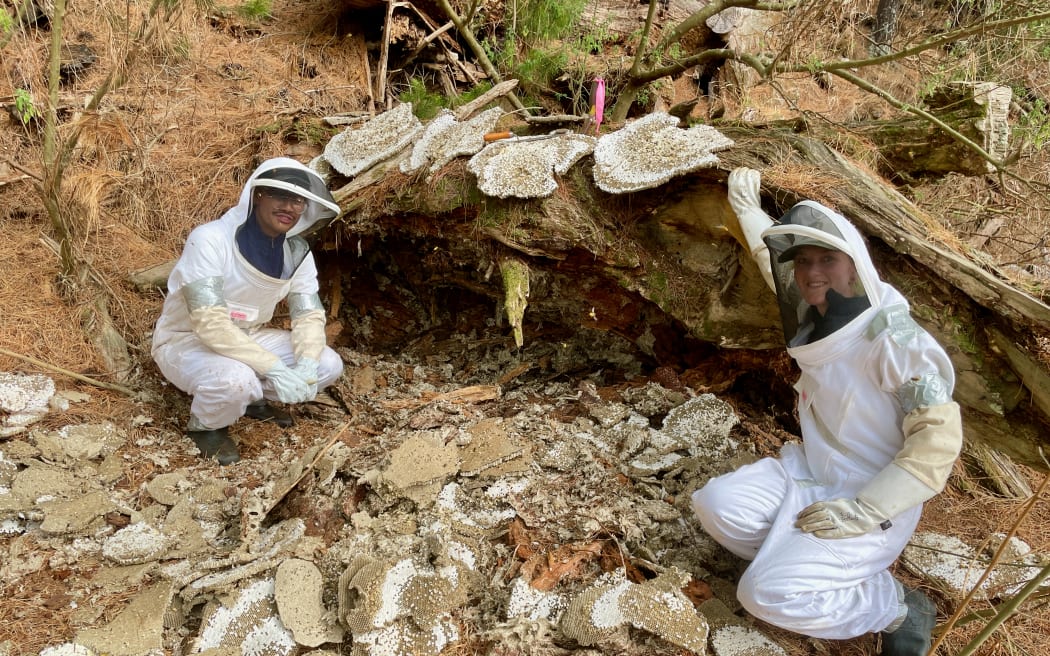
Aiden Reason and James Damayo at the nest site. Photo: Supplied
Dismantling this particular nest was not an easy job and the wasps became quite angry and aggressive, he said.
"We had protective equipment on of course and layers of it but they were still trying their best, so they were stinging anywhere that they could get or near us, including through the visor of our bee suits to try and ward us away."
Lester advised anyone who came across a wasps nest to use a toxic bait such as Vespex to destroy it.
"That can be placed quite a ways away from the nest and the wasps will find it ... take it back to the nest and the nest will die from that so a relatively safe way of controlling wasps."
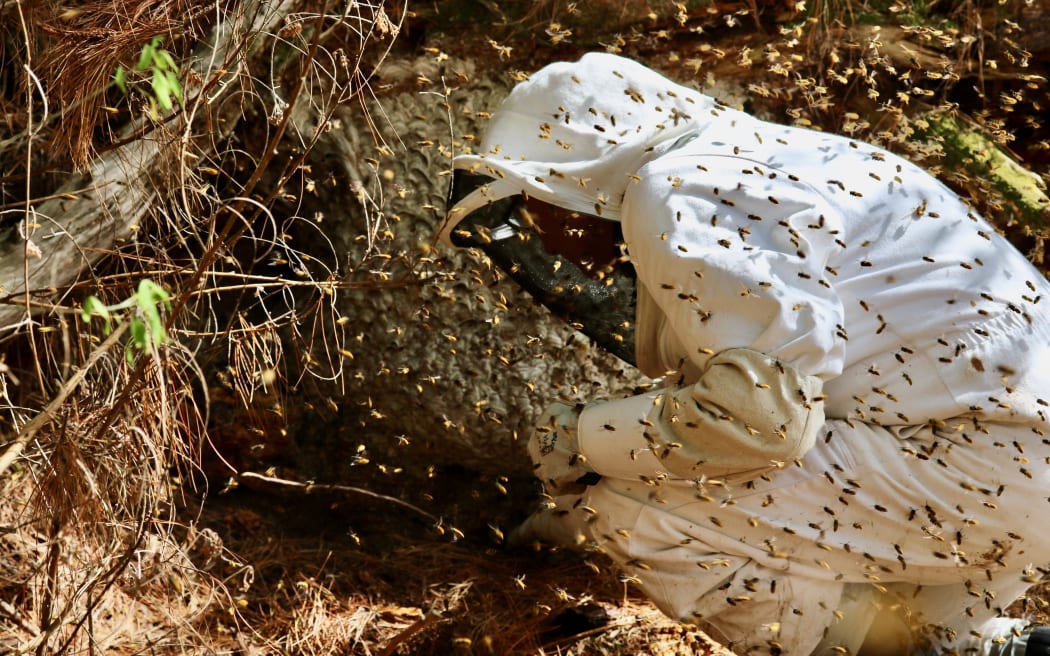
Phil Lester samples some angry wasps. Photo: Supplied
The bigger nests were becoming more common with climate change, Lester said
.
"They'll do it more and more when [there's] a warmer climate, less rainfall, drier conditions, mild winters, those sorts of things we'll start to see more of these large perennial nests."
The Department of Conservation lists German Wasps as one of five invasive wasp species introduced in the 1940s. The pest harmed native birds and insects, and were a threat to human health and recreation, it said.
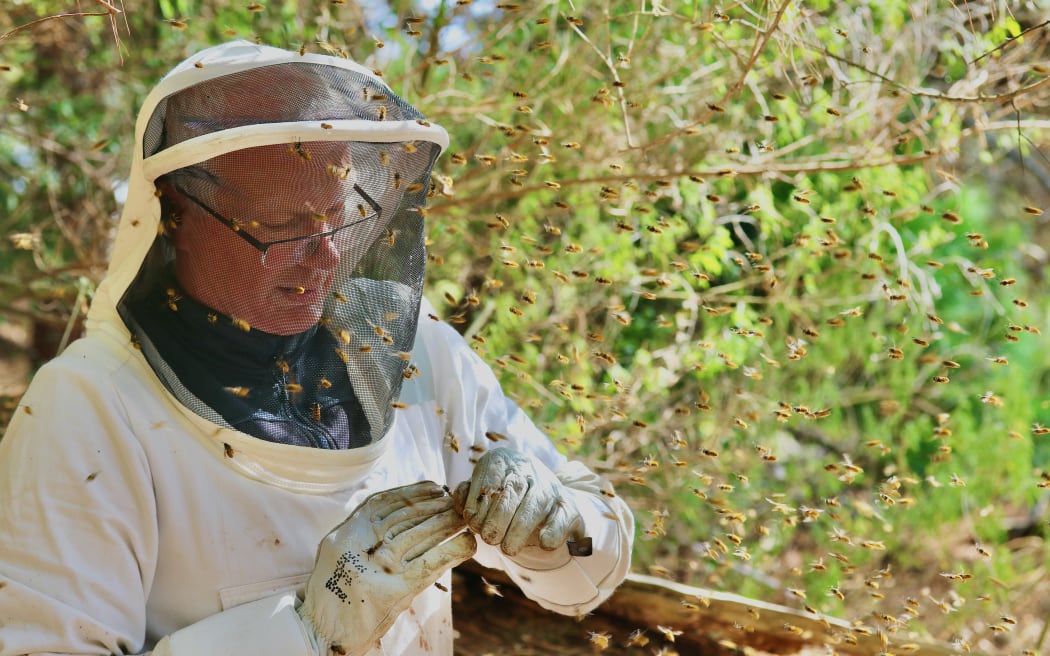
Phil Lester with the wasps. Photo: Supplied
"They are very big predators," Lester said.
"That nest that we discovered will have consumed many tens of kilos of our native invertebrates."
The wasps also economically impacted beekeepers by killing bees and apiarists often raided wasp hives at this time of year.
German Wasps were found in highest concentrations in the South Island's Honeydew Beech forests, where their biomass exceeded that of rats, possums and stoats combined, Lester said.
A study had estimated at least 10 percent of German Wasp nests in New Zealand became perennial surviving for more than one year, he said.

